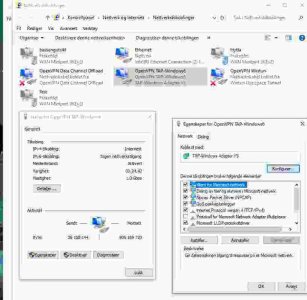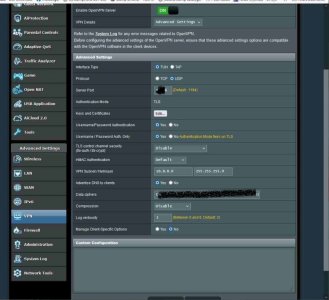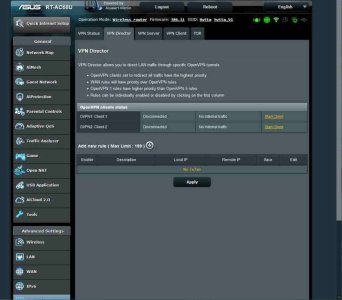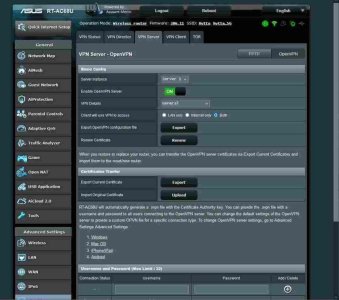I have the last days troubled with low speed on internet. Spite fiber. Therefore and because it was 12 years old, my provider installed a new house-central to days ago. It helped not som much and my old ASUS AC68-U is now also replaced with ASUS RT-AX86U Pro.
Everything worked perfect until I open the OpenVPN on my computer (the same happen on my laptop): The speed drop from 150 mips to 2,0 mips. When I shut down OpenVPN the speed is back to 150 mips. I use the OpenVPN to have contact with a webcamera 300 km from home and there has not been any change there. It work, but on pics in minute with that slow speed on OpenVPN:
Use of OpenVPN on computer and laptop has worked fine before for many years, so something happen with new router and housecentral. I have tried everything, change cabel to wifi, upgraded OpenVPN to 2.6.19-1003 amd64 (on my win10 pro) and checked network adapter which function OK. (I have still my old OpenVPN on the laptop and now behavure difference between the now on the computer and the laptop).
Hope for help.
Everything worked perfect until I open the OpenVPN on my computer (the same happen on my laptop): The speed drop from 150 mips to 2,0 mips. When I shut down OpenVPN the speed is back to 150 mips. I use the OpenVPN to have contact with a webcamera 300 km from home and there has not been any change there. It work, but on pics in minute with that slow speed on OpenVPN:
Use of OpenVPN on computer and laptop has worked fine before for many years, so something happen with new router and housecentral. I have tried everything, change cabel to wifi, upgraded OpenVPN to 2.6.19-1003 amd64 (on my win10 pro) and checked network adapter which function OK. (I have still my old OpenVPN on the laptop and now behavure difference between the now on the computer and the laptop).
Hope for help.






